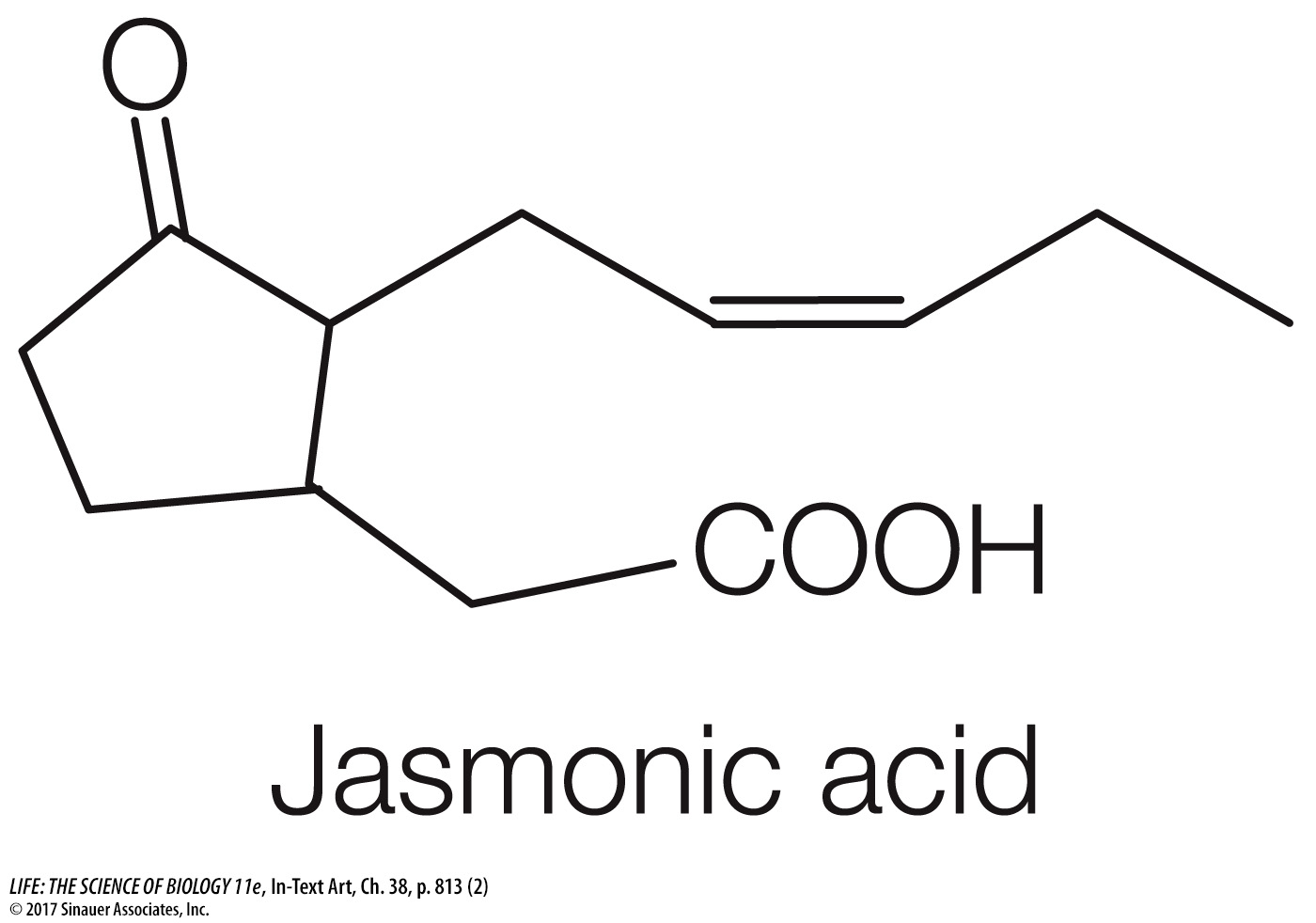Plants respond to herbivory with induced defenses
In Key Concept 38.1 we described the defenses that are induced in plants in response to pathogen attack. Plants also respond to wounding and herbivory with induced defenses involving signal transduction pathways. Less is known about the elicitors and receptors involved in these responses, but several classes of chemical elicitors have been identified. These elicitors are either derived from the herbivores themselves or are products of the digestion of plant tissues. For example, the enzymes that insects use to digest plant carbohydrates and lipids can elicit defensive responses. Some elicitors are produced when plant material passes through an herbivore’s digestive tract; these elicitors are composed of a fatty acid derived from the plant and an amino acid derived from the insect gut. One such elicitor, produced by insects feeding on corn plants, has been named volicitin for its ability to induce production of volatile signals that can travel to other plant parts—
The signal transduction pathways that are activated by herbivory or wounding involve several key components, some of which are shared by the pathways that are induced by pathogens:
Membrane signaling: The cell membrane is the part of the plant cell that is in contact with the environment. Within the first minute after an herbivore strikes, changes in the electric potential of the cell membrane occur in the damaged area. As we will describe in our chapter on the animal nervous system (see Key Concept 44.2), such changes can be rapidly transmitted as a signal along the cell membrane. In the case of plants responding to herbivory, the continuity of the symplast (see Figure 34.5) ensures that the signal travels over much of the plant within 10 minutes.
Reactive oxygen species: Both wounding and herbivory trigger the production of reactive oxygen species (such as superoxide and hydrogen peroxide), which act as signaling molecules in pathways that lead to changes in gene expression.
Hormone signaling: Herbivory induces the production of several hormones that stimulate various plant responses. The most important of these is jasmonic acid (jasmonate), which triggers systemic defenses against herbivores.

Media Clip 38.1 Plants Can Hear Danger
www.life11e.com/